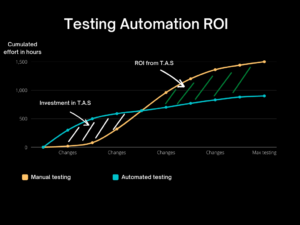In today’s investment management landscape, frequent updates, enhancements, product lifecycle changes, regulatory requirements and other initiatives all require asset managers to perform regular software testing. Testing within the context of capital markets is oven more onerous, and often require the validation and interpretation of results to be done by Subject Matter Experts (SME) resources, or the actual testing itself.
Our experience indicates that due to demands from Front office/Risk for new capabilities, more data and integration connectivity within the organization, onboarding of additional applications/systems and increasing regulatory demands, organizational system testing efforts are increasing and will continue to do so.
At EQUINOX CONSULTING, we think it is critical that organizations begin to explore better ways to perform and manage their testing efforts
It does not matter how modern your technical systems and infrastructure is, as long as organizations continue to rely on manual testing cycles, they will never be able to optimize their release structure and improve system and organizational agility
EQUINOX CONSULTING
We suggest organizations build up and use test automation to adapt to the increasing volume and complexity of testing demands. Test automation is a completely different approach and mindset when compared to manual testing. It requires a clear understanding of the current system integration components, a thorough understanding of the processes that are being tested, and knowledge of the different outcomes that can happen. In addition, it requires technical capabilities to build scripts and use new software, and a kaizen-like continuous improvement model to refine the test suite.
Test automation can optimize your organizations release schedule, increase testing accuracy, enhance test coverage to include end-to-end components, and better manage key resource constraints
EQUINOX CONSULTING
Test automation does come at a cost. As a result, organizations are reluctant to invest in test automation and prefer the safe approach of continuing to use manual testing. The table below indicates the key benefits and challenges organizations face when moving to an automated testing model

